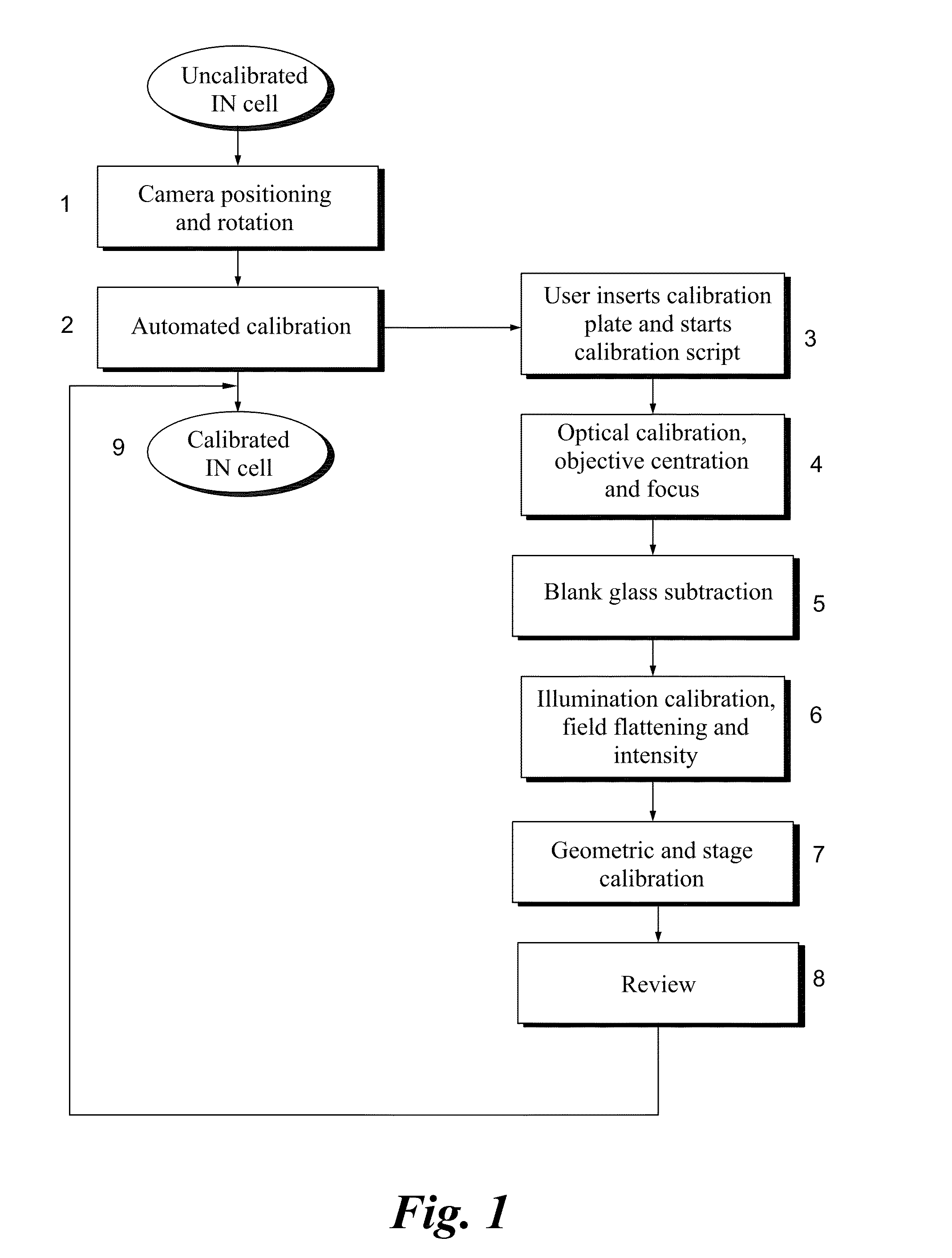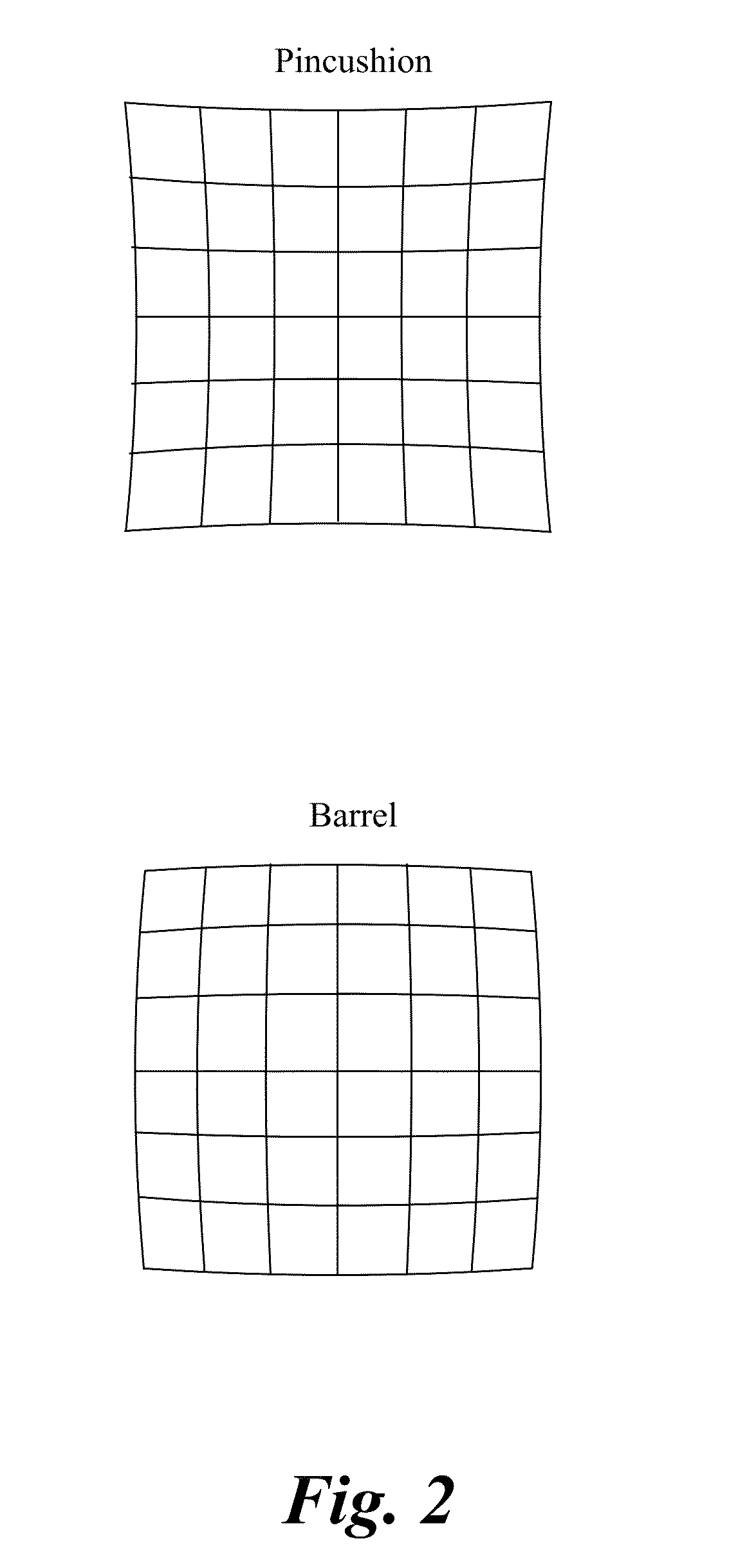Calibration of microscopy systems
a microscopy system and microscopy technology, applied in the field of microscope calibration, can solve the problems of affecting the accuracy the validity of the master microscope becoming vulnerable to changes or failures of the master microscope, and the microscope could suffer a change or degradation in one or more properties
- Summary
- Abstract
- Description
- Claims
- Application Information
AI Technical Summary
Benefits of technology
Problems solved by technology
Method used
Image
Examples
examples
[0055]As an example, experimental results for a geometric calibration are provided using a single FOV to validate inter-microscope imaging. A single FOV was acquired at the same slide coordinates on multiple microscopes and the positioning of images with and without stage calibration was compared.
[0056]As shown in FIG. 7, a single grid FOV is shown at 10x before and after running inter-microscope stage calibration. The images were obtained on two IN Cell Microscope Analyzer 2200 systems (GE HealthCare Life Sciences, Marlborough, Mass.) and referred to as IN Cell 1 and IN Cell 2 to differentiate the two systems. FIG. 7 shows the relative difference without stage calibration (top row) and with stage calibration (bottom row). FIGS. 8A and 8B, and FIGS. 9A and 9B, are images at 10× across two different FOVs, where the left image is IN Cell 1 and the right image is IN Cell 2, and each IN Cell is commanded to the same slide coordinates. More specifically FIGS. 8A and 8B is representative ...
PUM
 Login to View More
Login to View More Abstract
Description
Claims
Application Information
 Login to View More
Login to View More - R&D
- Intellectual Property
- Life Sciences
- Materials
- Tech Scout
- Unparalleled Data Quality
- Higher Quality Content
- 60% Fewer Hallucinations
Browse by: Latest US Patents, China's latest patents, Technical Efficacy Thesaurus, Application Domain, Technology Topic, Popular Technical Reports.
© 2025 PatSnap. All rights reserved.Legal|Privacy policy|Modern Slavery Act Transparency Statement|Sitemap|About US| Contact US: help@patsnap.com



